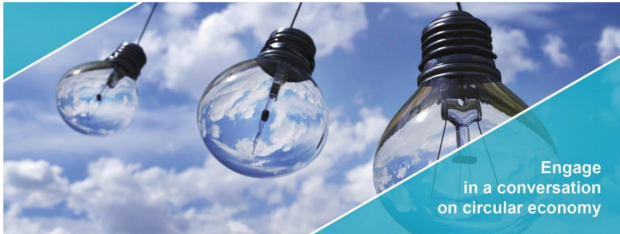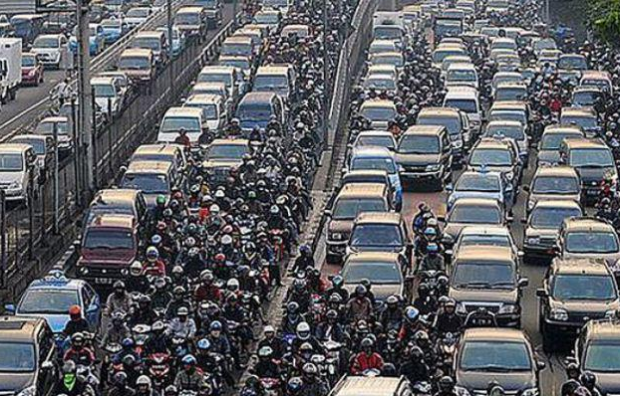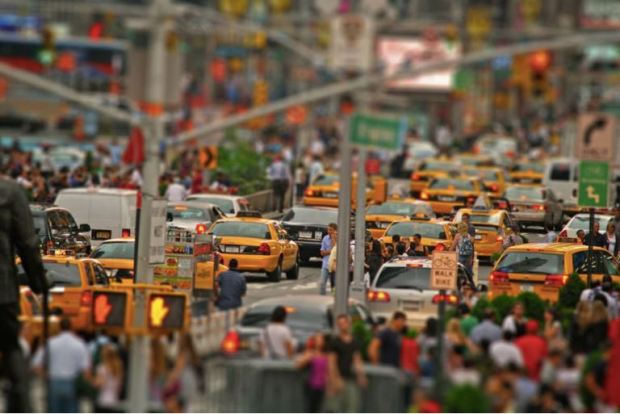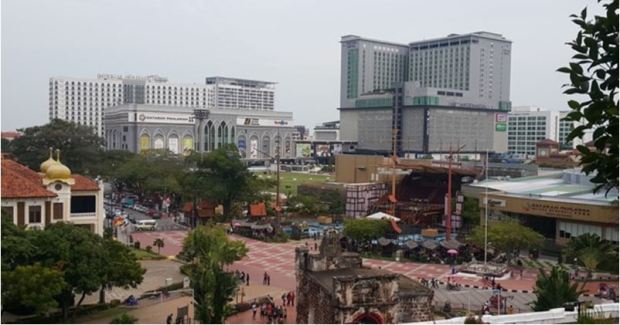
Complied in support of Master Class on The Future of Business: Circular Economy. 23 June 2017
* Link to working library: https://1drv.ms/f/s!AivPCmA_7fpkh_0qYfxT0IX98O5ivg


Complied in support of Master Class on The Future of Business: Circular Economy. 23 June 2017
* Link to working library: https://1drv.ms/f/s!AivPCmA_7fpkh_0qYfxT0IX98O5ivg

École des Ponts Business School. Master Class of 23 June 2017
Business, management and society are changing at an ever-accelerating pace. École des Ponts Business School is proud to be at the forefront of leading and supporting novel research initiatives.
This event will lead a discussion on how Circular Economy is a “resource-full” alternative to the traditional linear “resource-depleting” economic model of produce-consume-waste. It allows the economic ecosystem to do ‘more with less’ and transition to sustainable growth that fosters innovative practice and thinking.
– Esther Anaya-Boig, Doctoral researcher at Imperial College London
 I have just returned from the latest Velo-city Global Cycling Summit organized this year in Arnhem-Nijmegen, The Netherlands. The best part of the conference experience for me was that it gave me an opportunity to catch up with so many old friends and making new ones who share my deep interest in cycling as a mobility form and as a social act.
I have just returned from the latest Velo-city Global Cycling Summit organized this year in Arnhem-Nijmegen, The Netherlands. The best part of the conference experience for me was that it gave me an opportunity to catch up with so many old friends and making new ones who share my deep interest in cycling as a mobility form and as a social act.
I appreciate the hard work and good intentions of the many many people who have contributed and made this event possible. However upon considerable reflection on what I saw and heard during the three days of the conference and associated events, I would now like to share some views and reactions, with all due respect of course.
Continue reading
 The idea of slowing top speeds on traffic in the city to reduce accidents and achieve other important systemic benefits would seem like a pretty sensible, straightforward and affordable thing to do. For a lot of reasons. Let’s have a look.
The idea of slowing top speeds on traffic in the city to reduce accidents and achieve other important systemic benefits would seem like a pretty sensible, straightforward and affordable thing to do. For a lot of reasons. Let’s have a look.
 We’re all focused on the drama and entertainment of Trump’s takeover of the world’s centre of military, security and economic power. For some it’s exciting and entertaining, for others terrifying and apocalyptic. I too have been glued to the news – at various times having each of those responses! But now I’ve come back to earth, recognising it all for what it is. Important, but a sideshow to a much bigger and more important game. And on reflection, I’m glad he got elected.
We’re all focused on the drama and entertainment of Trump’s takeover of the world’s centre of military, security and economic power. For some it’s exciting and entertaining, for others terrifying and apocalyptic. I too have been glued to the news – at various times having each of those responses! But now I’ve come back to earth, recognising it all for what it is. Important, but a sideshow to a much bigger and more important game. And on reflection, I’m glad he got elected.
How can a Trump Presidency be positive? Surely this is a major setback – to action on climate change, to addressing inequality, to human rights and global security. Doesn’t it make the world a scarier and less stable place? In isolation, all true, but in context, not so much. The context is the key.
– By Paul Gilding, http://www.paulgilding.com/

Dear Friends of a Sustainable Penang,
I am hard at work on a challenging book under the title BETTER CHOICES: Bringing Sustainable Mobility to Smaller Asian Cities, which is not about Penang, the focus being much broader. However, at one point in the book I intend to comment on some of the most interesting things I have observed that are being done in Penang via the internet and civil society in order to broaden the debate and inform both concerned citizens, government, the business community, policy makers and the public more generally. We call this The Third Force.

WHY ARE THEY THERE? NOW? (Work trip in Jakarta on one more busy morning) Each person behind a wheel there made a choice. How can we give them Better Choices? That’s the rub.
What many people call “transportation” . . is at its very essence not about road or bridges, nor vehicles or technology, and not even about money. Above all it is about people, their needs, fears, desires and the decisions they make. And the backdrop — real and mental — against which they make those decision. The transport planner needs to know more them and take this knowledge into the center of the planning and policy process. What makes them tick, individually and collectively. What do they want and what they are likely to resist. And people, as we all know, are intensely complicated, personal and generally change-resistant. . But if we take the time and care we can start to understand them, at least a bit better. Which is a start.
That old transport paradigm, the one we are still living with today, is far too narrow in terms of the range and quality of people targeted and services offered, and in the process fails to serve what is — in fact — the transpiration majority.

To take full advantage of the fundamental structural differences between Old and New Mobility, it can help to reflect on the five necessary different steps of analysis and action suggested by the expression TMAPC – which sets out five alternative views or ways of bridging space, which of course is what transportation is supposed to be all about. These are the essential building blocks of a full-function sustainable transport plan for your city. If you have not integrated the best of each of these essential steps into your plan, it is time for a bit of continuing education.

* James Robertson: “Working for a sane alternative“

Several of my friends who follow my work have asked me to explain why Trump won and what it all means for the future. My first answer is that I have nothing interesting to say. It has all been said multiple times in multiple places – such as Reader Supported News. The trouble is that not enough people read RSN (and not enough people donate). Oh well, now the Dow is at an all-time high (at least it was a few hours ago) the small donors will come out and save the day .
On the other hand, now that Davos class neoliberalism has been correctly blamed for the loss, I think it is time to think about how Trump the climate-change denier will carry out his campaign promises. Is he going to put lots of ex-coal miners in West Virginia back underground? Is that what they want? Do his voters want the sky over Detroit to look like the sky over New Delhi (or Beijing?)
– Working draft for review and comment. By Robert U. Ayres. For https://ruayres.wordpress.com/
 Rachel Carson’s landmark book “Silent Spring” was published in 1962. It, alone, of the important environmental best-sellers of that era, had a significant impact: it led to the banning of DDT (at least in the Western world) and major shifts in agricultural practice.
Rachel Carson’s landmark book “Silent Spring” was published in 1962. It, alone, of the important environmental best-sellers of that era, had a significant impact: it led to the banning of DDT (at least in the Western world) and major shifts in agricultural practice.
Paul Ehrlich, a noted American biologist, best known for his warnings about the consequences of population growth and limited resources, was the author of a famous book “The Population Bomb” (1968), in which he claimed (as Malthus had claimed in 1798) that increasing population – demographic catastrophe — would inevitably outstrip food and resources, and that hundreds of millions of people would starve to death in the 1970s.
There were other dire predictions around that time. The First Report to the Club of Rome, entitled “Limits to Growth” was published in 1972 and sold 5 million copies in 15 languages. But it was immediately attacked by top economists and business leaders, and led to no changes in government policy.
The same can be said of the two subsequent Reports to the Club of Rome, which were instantaneously ignored. Lester Brown wrote a report for USDA in 1963 called “Man, Land and Food”, followed by two journal articles on agricultural problems. His best-seller “By Bread Alone”, with Erick Eckholm, appeared in 1954. He founded the WorldWatch Society (and a later think-tank) which have produced literally hundreds or Reports on environmental issues.
The culmination of this publishing activity was the most ambitious Report of all, called “Global 2000”. This one was initiated by President Jimmy Carter in 1977, supervised by his Council on Environmental Quality and published in 1980. It was an attempt to bring together under one hat (so to speak) all of the trends regarding resource needs on the one hand, and resource availability on the other, that might confront a President in the year 2000.
The mainstream response to the neo-Malthusian publications during the 60s and 70s was to label them ‘models of doom’ and their authors as ‘doomsters’. The anti-doomster crowd was led by Julian Simon and Herman Kahn, both of whom argued that there would never be any shortages of anything, because human ingenuity would always come to the rescue.
These people have been called “Cornucopians’ for obvious reasons. Much of the evidence favoring their view came from work by Resources for the Future, especially a study by Harold Barnett and Chandler Morse called “Scarcity and Growth”: The economics of Resource Scarcity” (Barnett and Morse 1963), followed sixteen years later by “Scarcity and Growth Reconsidered” (Smith and Krutilla 1979). The main message of these books, backed up by data, was that natural resource prices (with a few exceptions) have been declining, more or less monotonically, since records have been kept.
This history tended to support Julian Simon’s cornucopian view. In the Social Science Quarterly Julian Simon famously offered to bet $10,000 that the inflation adjusted price of any natural resource would fall over any period longer than a year. Paul Ehrlich, along with Berkeley physicists John Holdren and John Harte, took him up on it. They proposed a basket of equal amounts of 5 metals (copper, chromium, nickel , tin and tungsten) and the bet covered the period September 28 1980 to September 29 1990. The prices of 4 of the 5 metals did decline, so on Sept. 29, 1990 Ehrlich sent Simon a check for $576.07. Incidentally, in 1996 Simon lost a $1000 bet on timber prices to David South, a prof at Auburn University. Simon bet that timber prices would fall. They rose instead.
Regarding the Ehrlich-Simon bet, later analysis has shown that (1) in most of the 10 year periods in the last century, Ehrlich would have won the bet. Or (2) if the term of the bet had been extended to 2011, Ehrlich would have won. Or (3) if all the important commodities had been included (not just those 5 metals) Ehrlich would have won big. Then Simon offered to double the original bet to $20,000.
In 1993 Ehrlich and Steve Schneider (a climatologist) made a counter-offer. They offered to bet on a different set of 15 trends. Here is the list:
Julian Simon declined to bet against these trends (which he would have lost by a wide margin.) All of these trends (with the exception of AIDS deaths) are still continuing. Nevertheless, Julian Simon (and Herman Kahn) were extremely critical of the Global 2000 Study (GTS) in particular, and all of the Reports to the Club of Rome, by extension.
Here are the reasons given, from one of his articles.
The GPS may have been wrong, in that it did not sufficiently take into account declining raw material prices. (Limits to growth has been criticized for the same failing.) But that means that GPS actually underestimated the projected consumption of natural resources, and thus the negative environmental consequences that would result.
# # #
References:
# # #
About the author:
Robert U. Ayres is a physicist and economist, currently Novartis professor emeritus of economics, political science and technology management at INSEAD.. He is also Institute Scholar at the International Institute for Applied Systems Analysis (IIASA) in Austria, and a King’s Professor in Sweden. He has previously taught at Carnegie-Mellon University, and as a visiting Professor at Chalmers Institute of Technology. He is noted for his work on technological forecasting, life cycle assessment, mass-balance accounting, energy efficiency and the role of thermodynamics in economic growth. He originated the concept of “industrial metabolism”, known today as “industrial ecology” with its own journal. He has conducted pioneering studies of materials/energy flows in the global economy.
Ayres is author or co-author of 21 books and more than 200 journal articles and book chapters. The most recent books are Energy, Complexity and Wealth Maximization (Springer, 2016), The Bubble Economy (MIT Press, 2014) “Crossing the Energy Divide” with Edward Ayres (Wharton Press, 2010) and The Economic Growth Engine with Benjamin Warr (Edward Elgar, 2009).
# # #
 World Streets is pleased to introduce to our 4419 international readers signed in from 149 countries from all continents, a valuable reference source for transportation and city planners, public agencies, researchers, environmentalists, students, NGOs, companies, transporters and others who are looking for new ways to get around in our daily lives, hopefully with more and better choices. The Shared Mobility Primer from the University of California, Berkeley’s Transportation Sustainability Research Center offers a practical guide with resources, information, and tools for local governments and public agencies seeking to implement emerging services or to manage existing shared mobility services.
World Streets is pleased to introduce to our 4419 international readers signed in from 149 countries from all continents, a valuable reference source for transportation and city planners, public agencies, researchers, environmentalists, students, NGOs, companies, transporters and others who are looking for new ways to get around in our daily lives, hopefully with more and better choices. The Shared Mobility Primer from the University of California, Berkeley’s Transportation Sustainability Research Center offers a practical guide with resources, information, and tools for local governments and public agencies seeking to implement emerging services or to manage existing shared mobility services.

Cultural dissonance – Melaka
The more I thought about this question, and as I dug deeper into my research, it quickly became evident that there is a lot more to it than I had initially thought.
– Dr. Creighton Connally, Postdoctoral Fellow, Asian Urbanism Cluster, Asia Research Institute, NUS, Singapore